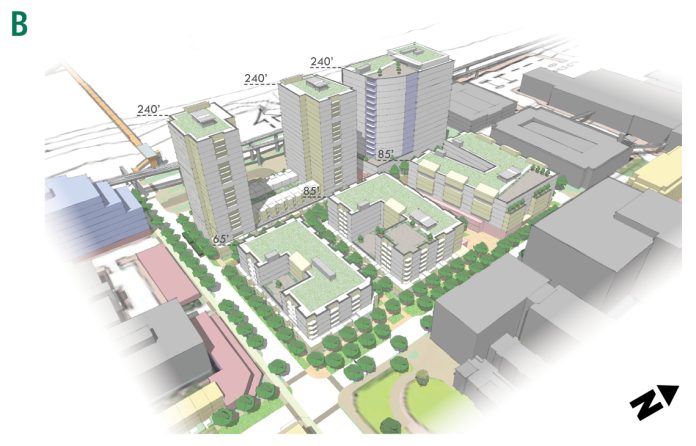Light rail arriving to new neighborhoods brings with it ample opportunity for transit-oriented development (TOD). Anticipation is particularly high ahead of Northgate Station, where King County has set aside two large lots comprising 5.7 acres for affordable housing. Seattle has designated Northgate an Urban Center and zoned the area for some high-rise development.
Just how ambitious the project is remains to be seen. But feedback from the public could push King County and the City in the right direction as they invest in affordable housing. As Stephen Fesler reported, “The City and County will both contribute $10 million to total $20 million for the publicly financed affordable housing. Funding for the units is coming from the City’s recently approved (and redoubled) 2016 Housing Levy and the County’s Transit-Oriented Development bond fund.”
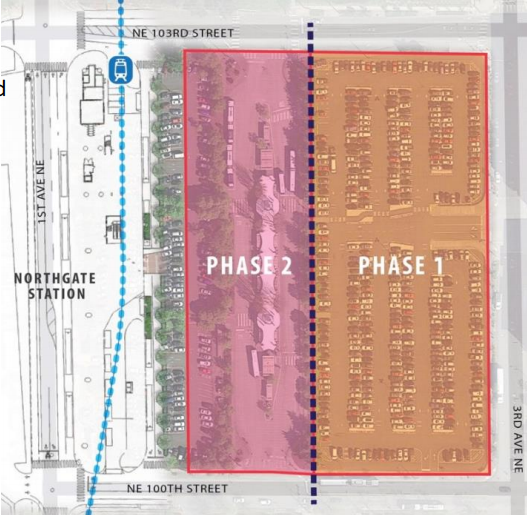
The lots are zoned Neighborhood Commercial-125 with a height limit of 125 feet, but King County Metro said it could go to 240-foot zoning under a rezone. The two phases should proceed with the first going in 2018 with the Sound Transit garage opening, according to King County Metro’s presentation. Phase two is anticipated in 2021 along with the opening of Northgate Station, keeping the bus terminal in place until its replacement is fully operational. King County and City of Seattle are negotiating a Development Agreement right now with the councils weighing in later this spring and a Request For Proposals (RFP) going out to developers this fall.
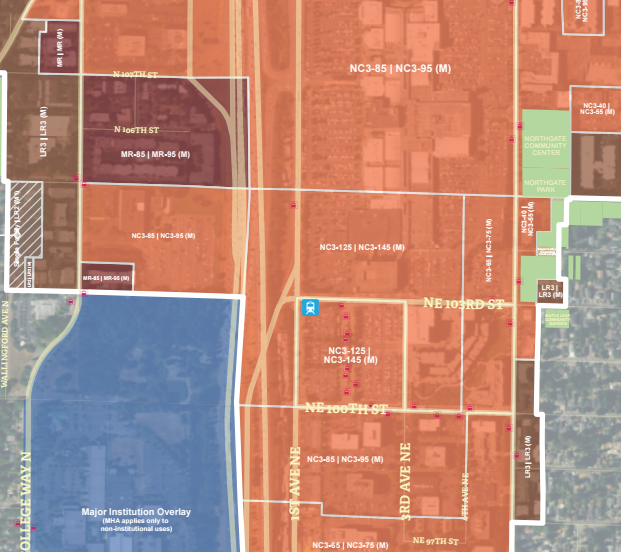
The Mandatory Housing Affordability (MHA) draft rezones propose to take Sound Transit’s TOD site to 145-foot zoning, but government partners seem to expect a Station Overlay District or some other process to take the site to 240 zoning. Such a change would be most welcome. Immediately adjacent to light rail, the publicly-owned site should be maximized for public benefit. Notice the difference in build out.
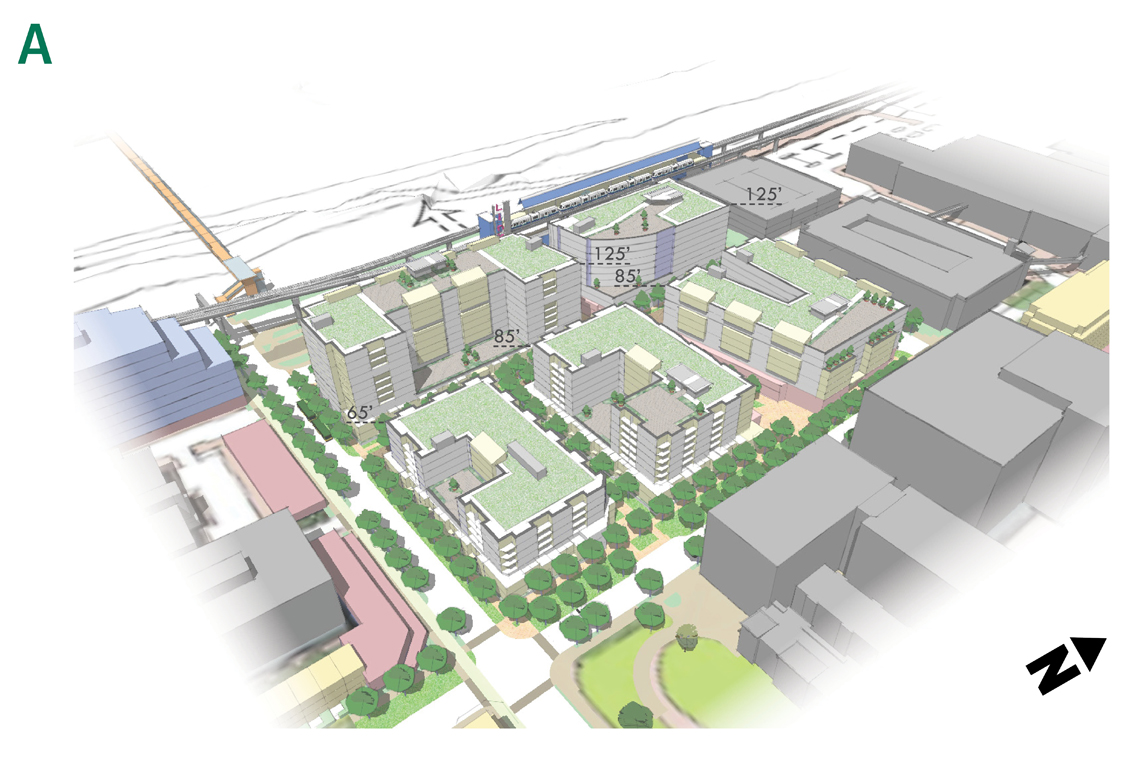
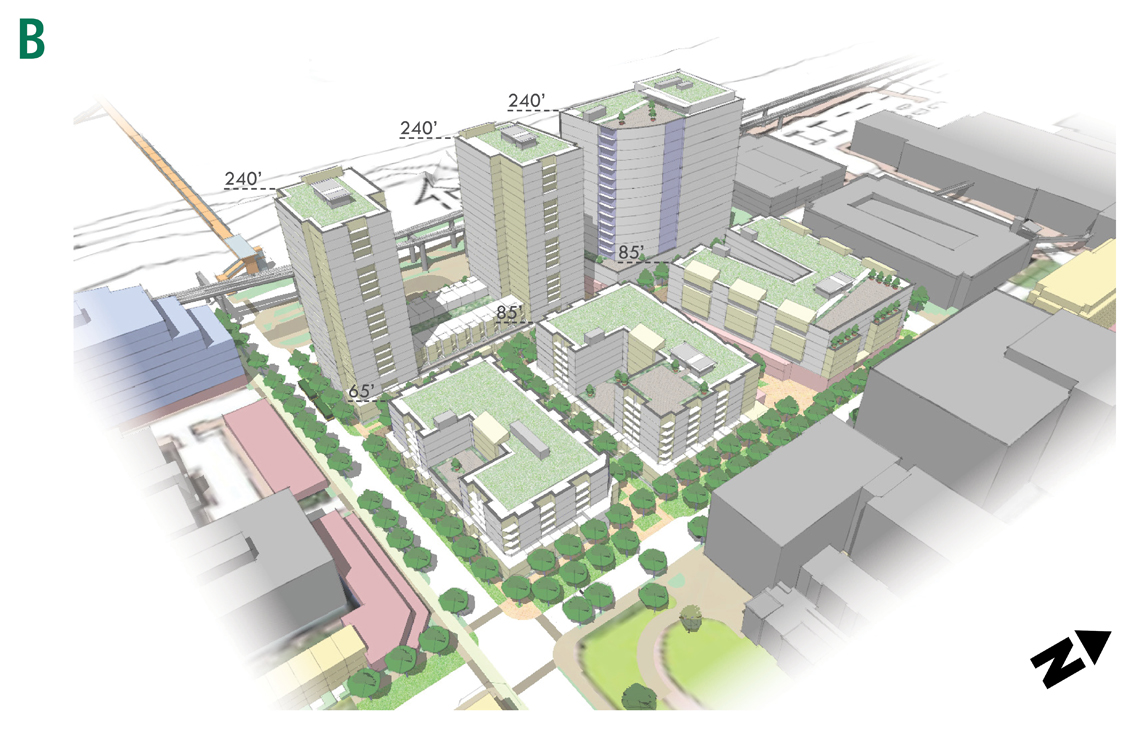
It’s commendable that Sound Transit, King County, and City of Seattle are planning to speed up the delivery of affordable housing, especially when compared to Capitol Hill Station, which opened one year ago with the transit-oriented development yet to break ground. Still, it can’t be understated that building the site well below existing zoning when upzones are on the way would be a big missed opportunity. Only so much urban land is publicly owned, and even less is so ideally situated with rapid transit.
It’s not clear why the eastern site (phase one) is rendered well below even what existing zoning allows at 85 feet, 40 feet below 125-foot zoning and 60 feet below the proposed MHA height limit to 145 feet, perhaps within the year. This may have to do with a restrictive floor area ratio (FAR) hindering proposals–existing NC3-125 has a FAR of 6, which seems to just encourage shorter bread-loaf buildings rather than high-rise towers, which struggle to utilitze the whole site and recoup their higher construction cost per square foot. Luckily the MHA process aims to raise the FAR to 7 in the new NC3-145 zone. Moreover a Station Overlay District could be sped up to ensure the site’s potential isn’t squandered and the sites get 240-foot zoning as soon as possible.
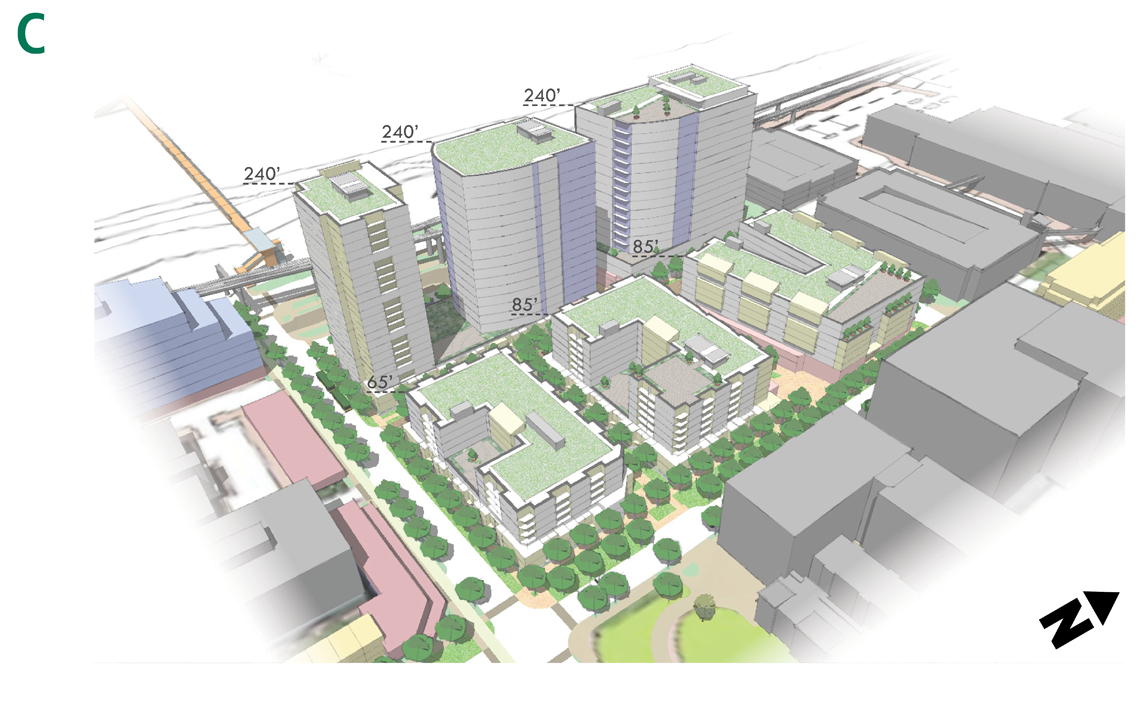
The other thing that’s not clear is why government partners are considering office space at a site earmarked for affordable housing. Perhaps, offices were seen as most profitable and incorporated to subsidize the affordable housing? Regardless, it seems Seattle’s demand is much more acute with housing, and this publicly owned site should seek to address that shortage first and foremost.
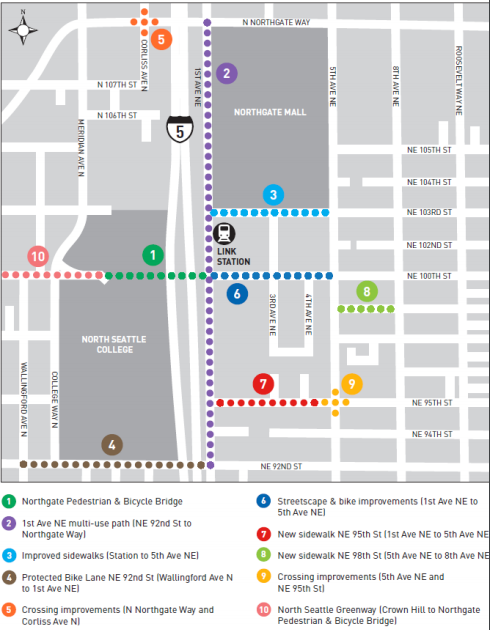
A survey on the TOD approach is open through May 22nd. We’ll also be keeping tabs on the Roosevelt Station oriented development as that planning process unfolds.
High Time For High-Rise: Reduced Rezones Do Not Reduce Displacement
Doug Trumm is publisher of The Urbanist. An Urbanist writer since 2015, he dreams of pedestrian streets, bus lanes, and a mass-timber building spree to end our housing crisis. He graduated from the Evans School of Public Policy and Governance at the University of Washington in 2019. He lives in Seattle's Fremont neighborhood and loves to explore the city by foot and by bike.

